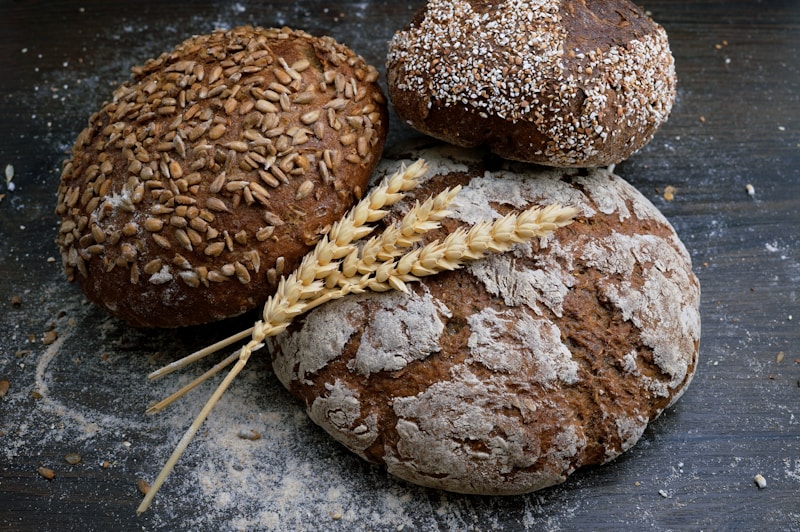Questions and Answers
What was the main catalyst for the formation of early human societies?
Bread
What was the main source of leavening in antiquity?
Sourdough Starter
What was the role of bread in medieval Europe?
Part of the table service
What hazardous materials were added to bread sold in England and the United States from the late 18th century to the end of the 19th century?
Signup and view all the answers
What is the Chorleywood bread process?
Signup and view all the answers
What was the preferred bread of the rich and the poor in most western societies before the late 20th century?
Signup and view all the answers
What is the main purpose of chemical additives in smaller retail bakeries?
Signup and view all the answers
What was the reason for the regulations drawn up in the UK in 1993 regarding sourdough bread?
Signup and view all the answers
What is the main difference between bread makers that automate the process of making bread and traditional bread making?
Signup and view all the answers
Study Notes
A Brief History of Bread
- Bread was central to the formation of early human societies, leading to the formation of towns and more sophisticated forms of societal organization.
- Charred crumbs of a flatbread made by Natufian hunter-gatherers from wild wheat, wild barley and plant roots were found in Jordan, predating the earliest known making of bread from cultivated wheat by thousands of years.
- Bread is found in Neolithic sites in Turkey and Europe from around 9,100 years ago, and there is extensive evidence of breadmaking in Ancient Egypt during the Neolithic period, some 10,000 years ago.
- The most common source of leavening in antiquity was to retain a piece of dough from the previous day to utilize as a form of sourdough starter.
- Even in antiquity, there was a wide variety of breads, including griddle cakes, honey-and-oil bread, mushroom-shaped loaves covered in poppy seeds, and the military specialty of rolls baked on a spit.
- In medieval Europe, bread served not only as a staple food but also as part of the table service, with the trencher, a piece of stale bread, being served as an absorbent plate.
- From the late 18th century to the end of the 19th century, bread sold in England and the United States was often adulterated with hazardous materials, including chalk, sawdust, alum, plaster, clay, and ammonium carbonate.
- Bread-baking was industrialized at the start of the 20th century, and the Chorleywood bread process was developed in the UK in 1961, which used the intense mechanical working of dough to dramatically reduce fermentation time.
- For generations, white bread was the preferred bread of the rich while the poor ate dark (whole grain) bread, but in most western societies, the connotations reversed in the late 20th century.
- Chemical additives are used in smaller retail bakeries to speed up mixing time and reduce necessary fermentation time, so that a batch of bread may be mixed, made up, risen, and baked in fewer than three hours.
- Demand for sourdough in the UK grew to the point that in 1993, regulations were drawn up to define what could be sold as sourdough bread.
- In Germany, sourdough continued to be used for rye breads, even as commercial yeasts became more popular.
- Since 1986, domestic bread makers that automate the process of making bread have become popular in the home.
Studying That Suits You
Use AI to generate personalized quizzes and flashcards to suit your learning preferences.
Description
Think you know everything about bread? Test your knowledge with our quiz on the brief history of bread! From ancient Egypt to modern-day additives, this quiz covers the evolution of bread-making techniques and the various types of bread enjoyed throughout history. See if you can rise to the challenge and prove yourself as a bread expert!




